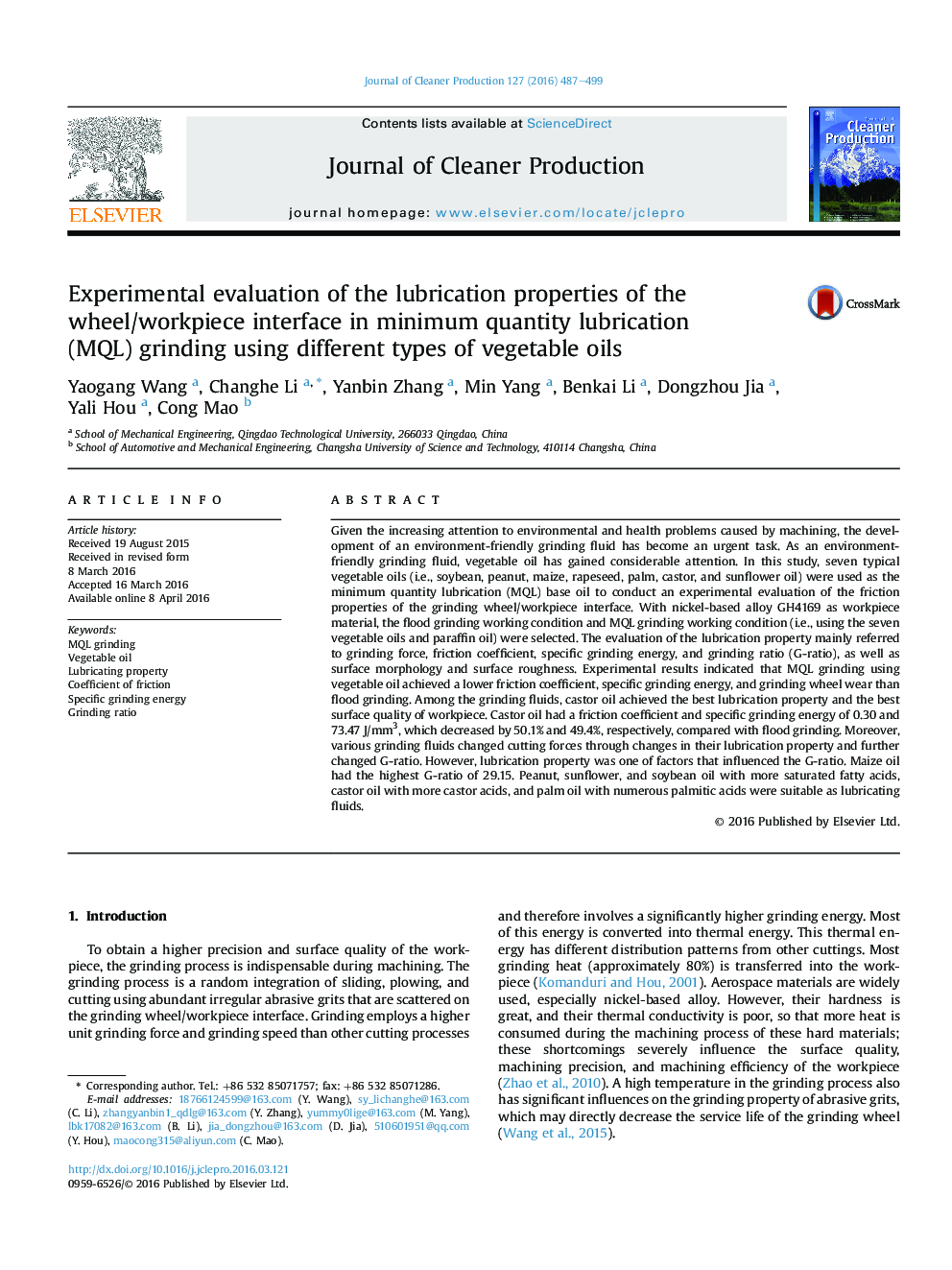| Article ID | Journal | Published Year | Pages | File Type |
|---|---|---|---|---|
| 1744106 | Journal of Cleaner Production | 2016 | 13 Pages |
•MQL grinding using different types vegetable oils was experimental evaluated.•The film-forming formation mechanism was analyzed of vegetable oil in MQL grinding.•The lubricating property of vegetable oil is better than flood lubrication.•The physicochemical properties of vegetable oil influence the lubricating property.•Lubrication property only was one influence factor of G-ratio.
Given the increasing attention to environmental and health problems caused by machining, the development of an environment-friendly grinding fluid has become an urgent task. As an environment-friendly grinding fluid, vegetable oil has gained considerable attention. In this study, seven typical vegetable oils (i.e., soybean, peanut, maize, rapeseed, palm, castor, and sunflower oil) were used as the minimum quantity lubrication (MQL) base oil to conduct an experimental evaluation of the friction properties of the grinding wheel/workpiece interface. With nickel-based alloy GH4169 as workpiece material, the flood grinding working condition and MQL grinding working condition (i.e., using the seven vegetable oils and paraffin oil) were selected. The evaluation of the lubrication property mainly referred to grinding force, friction coefficient, specific grinding energy, and grinding ratio (G-ratio), as well as surface morphology and surface roughness. Experimental results indicated that MQL grinding using vegetable oil achieved a lower friction coefficient, specific grinding energy, and grinding wheel wear than flood grinding. Among the grinding fluids, castor oil achieved the best lubrication property and the best surface quality of workpiece. Castor oil had a friction coefficient and specific grinding energy of 0.30 and 73.47 J/mm3, which decreased by 50.1% and 49.4%, respectively, compared with flood grinding. Moreover, various grinding fluids changed cutting forces through changes in their lubrication property and further changed G-ratio. However, lubrication property was one of factors that influenced the G-ratio. Maize oil had the highest G-ratio of 29.15. Peanut, sunflower, and soybean oil with more saturated fatty acids, castor oil with more castor acids, and palm oil with numerous palmitic acids were suitable as lubricating fluids.
